![]()
![]()
![]()
Use LEFT and RIGHT arrow keys to navigate between flashcards;
Use UP and DOWN arrow keys to flip the card;
H to show hint;
A reads text to speech;
19 Cards in this Set
- Front
- Back
|
Subphylum Trilobita
|
1. Extinct.
2. Three tagmata; head with compound eyes, antennae present, the thorax and epygidium (fused appendages at the rear), other appendages biramous. 3. marine bottom feeders |
|
|
Subphylum Cheliceriformes
|
1. first pair of appendages are chelicerae (pincer like), second pair are pedipalps
2. antenna absent 3. prosoma - no head/thorax division 4. four pairs of walking legs |
|
|
Subphylym Crustacea
|
1. first segment bearing a pair of antennae (two pairs total)
2. other appendates biramous and differentiated |
|
|
Subphylum Uniramia
|
Myriapoda and insects
1. Trachea and malpigian tubules 2. uniramous appendaegs 3. Class Insecta: head, thorax, abdomen 4. Class Myriapoda: head, elongated trunk with many pairs of legs 5. |
|
|
Class Insecta
|
1. three pairs of walking legs and often two pairs of wings in the thoracic region.
2. head has a single pair of antenae and a pair of compound eyes |
|
|
Subphylum Cheliceriformes
Subclass Merostomata Order Xiphosura |
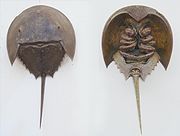
horshoe crabs
1. cephalothorax wide, arched 2. merostomata have a continuous dorsal carapace present; abdomen with gills and posterior telson |
|
|
Subphylum Cheliceriformes
Class Merostomata Subclass Arachnida (8 legs) Order Scorpiones |
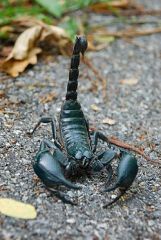
True scorpions.
1. segmentation of the opisthosoma, prosoma to stinger; divided into two portions 2. maternal care for young 3. nocturnal predators with a stinging apparatus that contains a neurotoxin |
|
|
Subphylum Cheliceriformes
Class merostomata Subclass Arachnida Order Uropygi |

Whip scorpions and viegaroons
1. long conspicuous telson 2. tropical habitat 3. nocturnal with ability to spray acid from gland near anus |
|
|
Subphylum Cheliceriformes
Class merostomata Subclass Arachnida Order Amblypgi |
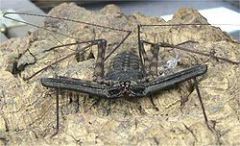
Tailless whip scorpions and whip spiders, nocturnal and occur in caves and other humid places
|
|
|
Subphylum Cheliceriformes
Class merostomata Subclass arachnida Order Pseudoscoprionida |
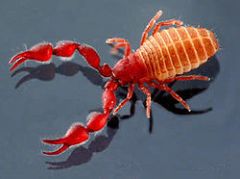
false scorpions.
1. Chelicerae with silk glands and pedipalps with poison glands, very small |
|
|
Subphylum Cheliceriformes
Class merostomata Subclass Arachnida Order Araneae |
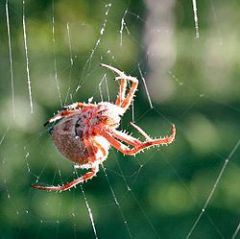
Spiders
1. Opisthosoma is unsegmented, eight simple eyes. 2. six spinnerets that weave silk 3. females are generally larger than males and mating sometimes involves very elaborate courtship 4. all are predatory |
|
|
Subphylum Cheliceriformes
Class merostomata Subclass Arachnida Order Opiliones |
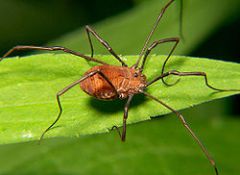
harvestmen and daddy long legs
1. cephalothorax and abdomen are joined, fused 2. body rounded or oval, with the prosoma and opisthosoma broadly joined 3. two eyes generally located on each side of a median elevation |
|
|
Subphylum Cheliceriformes
Class merostomata Subclass arachnida Order Acari |
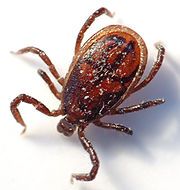
1. Ticks and mites
2. cephalothorax and abdomen broadly joined 3. abdomen unsegmented 4. many are parasitic 5. disease vectors |
|
|
Subphylum Cheliceriformes
Class merostomata Subclass Arachnida Order Solifugae |
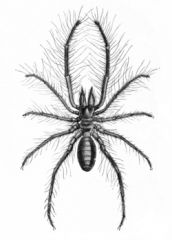
Sun spiders
1. prosoma with segmented abdomen 2. 4 pairs of legs, but the first pair are small, ex camel spider 3. large chelicerae |
|
|
Subphylum Cheliceriformes
Class pycnogonida |
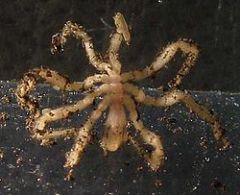
Sea spider
1. very long legs relative to body size 2. cephalothorax dwarfs abdomen 3. gills, unique among arthropods in their possession of a proboscis, ovigers for brooding eggs in males |
|
|
Subphylum Crustacea
Order Decapoda |
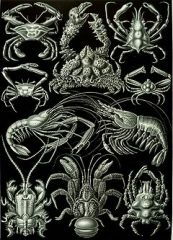
name means 10 legs, and they all have 5 pairs of legs on the last five pairs of thoracic segments
2. front three pairs are used as mouthparts 3. in many one pair has enlarged picners 4. biramous appendages |
|
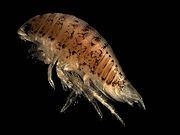
Subphylum crustacea
Class isopoda |

1. seven pairs of legs
2. two pairs of antennae but the first pair is reduced 3. body is divided into three regions, cephalon, pereon, and pleon 4. appendages of pleon called pleopods are specialized for respiratory function |
|
|
Subphylum Unirama
Class myriapoda Order Chilopoda |
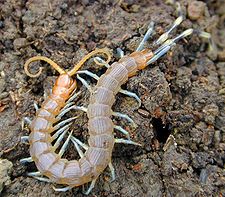
centipede
1. one pair of legs per segment 2. pair of venom claws |
|
|
Subphylum uniram
class myriapoda subclass diplopoda |
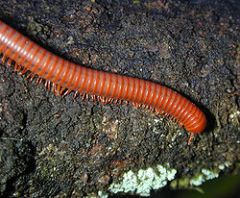
Millipedes!
1. two pairs of legs per segment 2. most are herbivorious |

